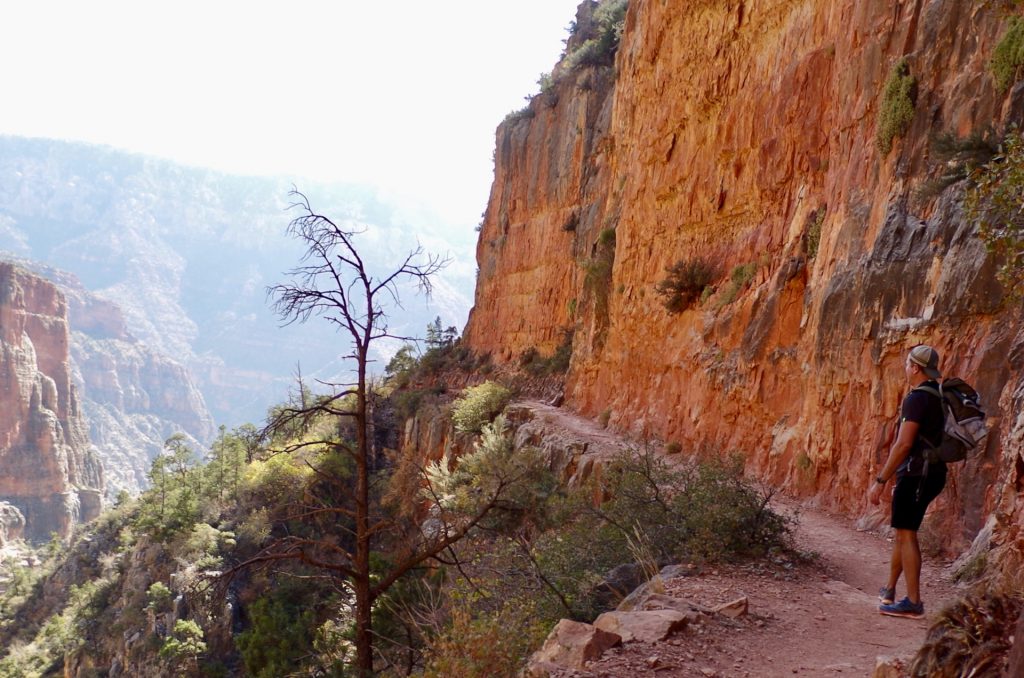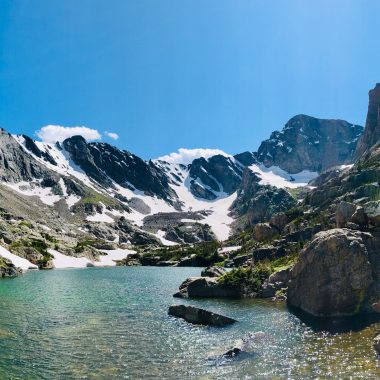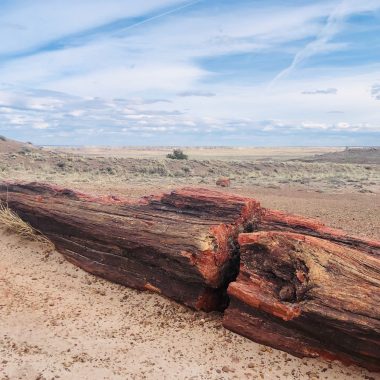He walked towards me, delicately tip-toeing as if on a high wire. A large backpack hung on his chest like heavy body armor, obscuring his view so that he couldn’t actually see the ground beneath his feet. Then I saw his girlfriend coming up behind him, looking pale with a pained expression of someone who was not feeling well at all. They moved slowly, a half-step at a time, eager to escape the gravity that came with exploring the depths of one of the great natural wonders on earth–the Grand Canyon.
It was the final day of my four day journey to the North Rim and I was descending the North Kaibab trail, the second half of the famous Rim to Rim trail. The young couple struggling on the trail had been trapped at the bottom of the canyon for two nights, where she had fallen ill and was unable to carry her backpack any further. With no good options, they decided to try and make it out on the third day, with her boyfriend carrying both of their heavy packs. As I watched him dutifully leading them out of what surely must have become a nightmare of a trek, I realized there was a good chance he might not make it all way out and offered to carry her pack the last few miles out of the canyon. He happily obliged, making for a feel-good ending (and safe return for them) to my own adventure to the North Rim.
A World Apart
As the crow flies, it’s only a few miles from the South Rim to the North Rim of the Grand Canyon. By foot, however, it takes at least two days to traverse the 24 mile Rim to Rim trail. Via car, the journey takes 5 hours on meandering roads around the eastern reaches of the canyon. It’s fitting that it takes so much effort to travel between the two rims because they are truly worlds apart. Of the six-plus million visitors to Grand Canyon National Park each year, fewer than 200,000 make the effort to come here.
The North Rim is set against the Kaibab Plateau, a pine-covered, rugged mountainous area that plunges from 9200 feet of elevation to the base of the canyon over just a few short miles. While the South Rim descends abruptly to the Colorado River below, the North Rim reveals its descent in complex layers that weave together in a menagerie of different ecological zones and geologic forms.
I arrived at the North Rim in late October, a precarious time to visit this side of the park. Because of the high elevation and local weather patterns, there is a good chance that there will be freezing temps and snow this time of year. Slippery ice makes descending the trails, which often hang on the edge of the steep canyon walls, nearly impossible. Fortunately, the weather held long enough to give me a few sunny days to explore all that the North Rim has to offer. If you do come this time of year, you must come prepared. The lodge and other facilities on the North Rim close for the season on October 15th. The campgrounds and limited Visitor Center access remain open until October 31st.
Bright Angel Point
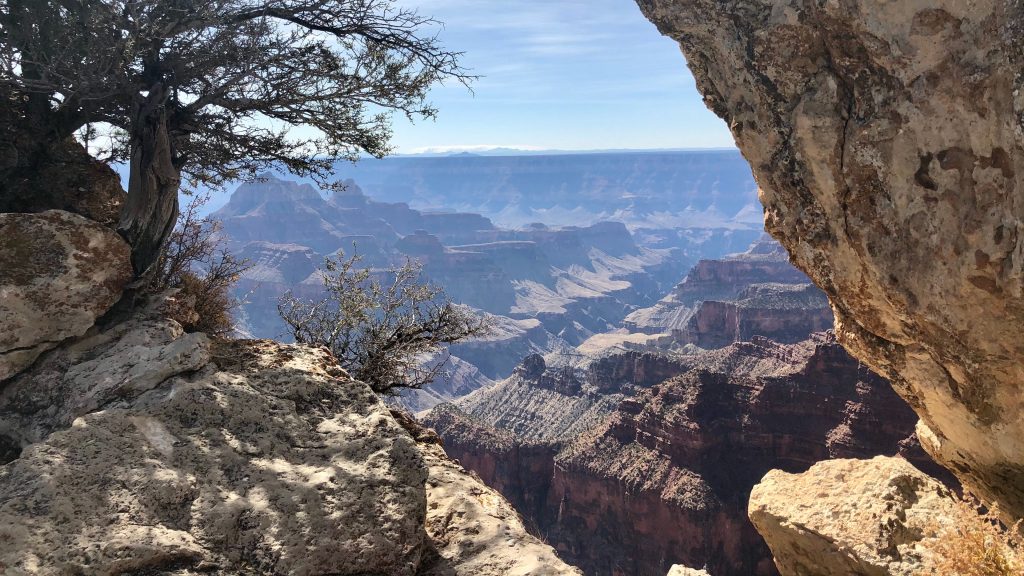
From the Visitor Center it’s a short half-mile walk to Bright Angel point, a large sandstone prominence that juts out into the canyon. The views from here are among the best of all the overlooks on the North Rim. The trail narrows distinctly on both sides in places, giving you a visceral sense of the vast depths of the canyon below. At the end there is a viewing platform which provides an unobstructed view across the canyon to the South Rim.
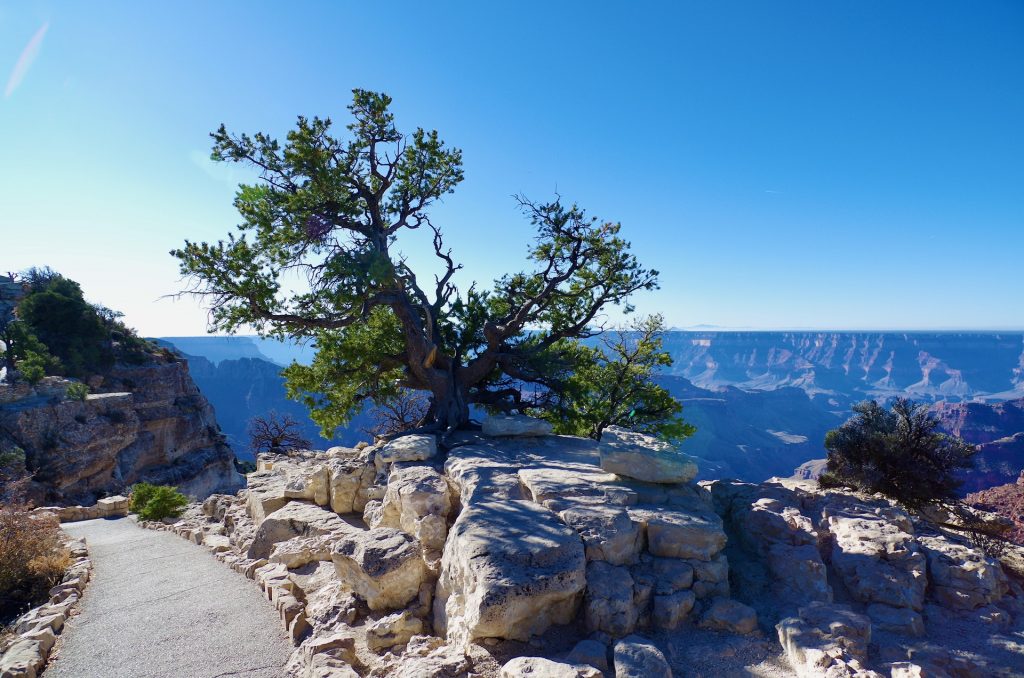
Transept Trail
The one mile out and back on Bright Angel isn’t the most challenging of trails. If you want to add more miles, try taking the Transept trail which extends from the frontside of the Grand Canyon Lodge a couple miles along the canyon rim. This trail offers a number of dramatic viewpoints along with the solitude of the pine forest that abuts the rim. Along the way you’ll pass by the footprint of a small Anasazi pueblo which was once used by ancient people who lived here nearly a thousand years ago.

Widforss Trail
My goal on this trip was to do most of the North Rim overlooks, rim trails, and scenic drive before descending into the canyon on the North Kaibab trail on the final day. On the second day, I set out on the Widforss trail, which traverses along the rim of Bright Angel Canyon for a nine mile out and back hike. The Widforss intersperses sections of forested trail that abruptly open to views of, and massive drops into, the wild canyon below. You definitely wouldn’t want to wander around in this forest at night!

Having been to the South Rim, with its crush of tourist activity, the North Rim really is remarkable for its solitude. I encountered only three other groups on this entire trail. The solitude allows for a wholly different experience and an opportunity to be more mindful of the magician that is mother nature. Using just water, rocks, and time, she has created a most riveting place here.
Point Imperial
From the visitors center, it’s about an eight mile drive to Point Imperial where you’ll find Grand View Vista, the highest view point in the park at 8800 feet of elevation. Because of the overlapping layers of the canyon, you cannot see the Colorado River. The Grand View includes a vast perspective on the painted desert and Navajo Nation which lie to the east. Point Imperial is a great way to finish the day if your legs are tired from a long hike. Try to get there a couple hours before sunset to get perfectly lit photos of the canyon and painted desert. I arrived a little later, which added dramatic shadows to all of my photos.

Cape Royal
Cape Royal road is the North Rim’s scenic drive, meandering fifteen miles along the Walhalla plateau. Along with many pullouts and scenic overlooks, travelers on Cape Royal are rewarded with the extraordinary Angel’s Window at the end. A geologic highlight of the park, Angel’s Window is a natural arch that provides a bridge for visitors out onto a sandstone platform with endless views of the canyon below.
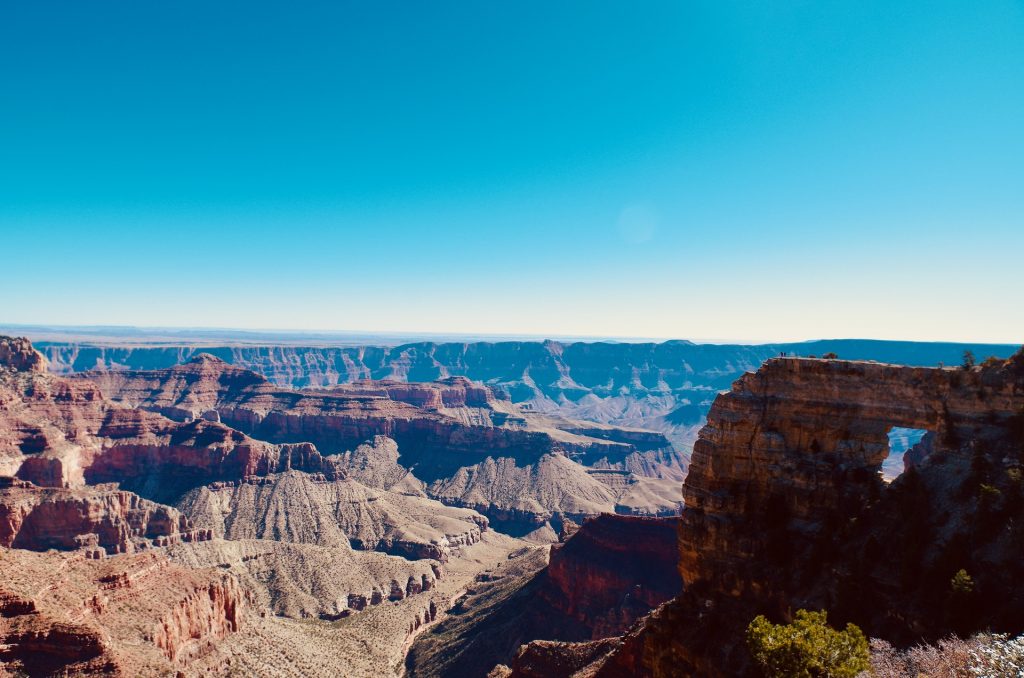
Continuing on the Cape Royal trail from Angel’s Point, you’re treated to a few more geologic features which have been appropriately named “Temples”. Resembling ancient temples, Wotans Throne and Vishnu Temple are the result of of side canyon erosion which separate peninsulas of rock from the canyon rim.
Like most National Parks, Grand Canyon isn’t particularly dog friendly. So on the way back from Angel’s Window, I stopped at Roosevelt Point to let my dogs stretch their legs and get their own look at the Grand Canyon. Coco was really feeling the holy spirit as she took it all in.
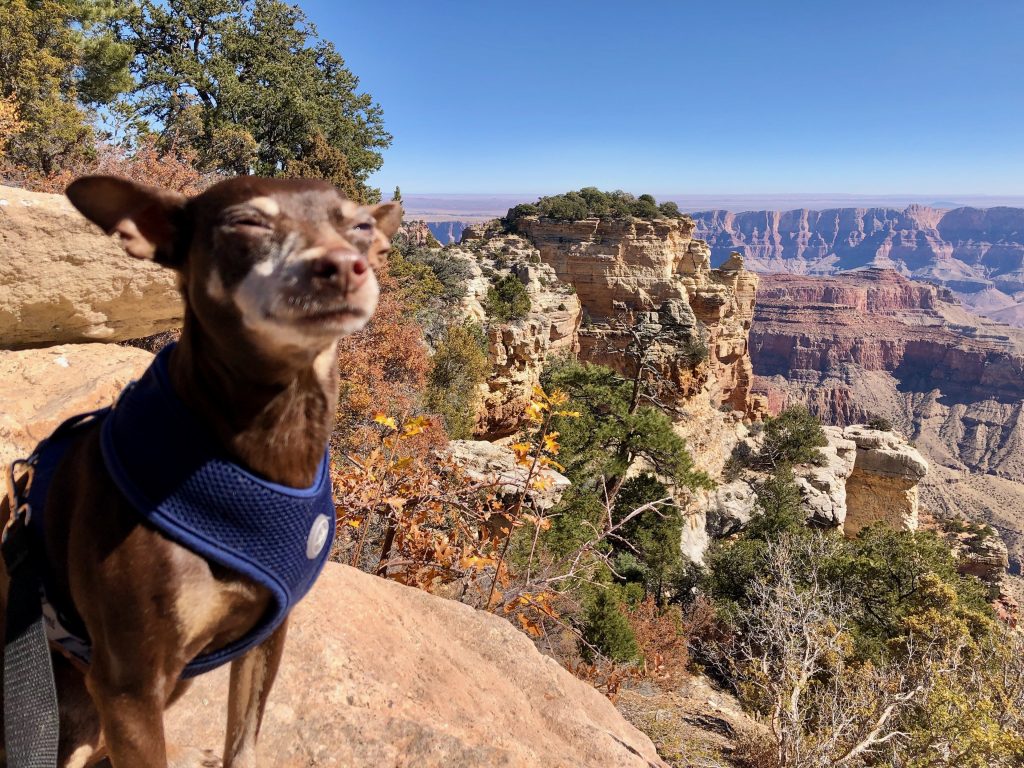
North Kaibab Trail
Saving the best for last, on my final day in the park I hiked the North Kaibab trail. This was my first ever descent into the Grand Canyon and I was excited, to say the least. The North Kaibab trail is the second leg of the Rim to Rim trek from the South Rim, extending fourteen miles from the Colorado River at the base of the canyon all the way to the North Rim. For day hikes from the North Rim, the National Park Service recommends hikers go no further than Roaring Springs, about 4.2 miles and 3000 feet below the rim. This is a rigorous, steep trail and the temperatures can increase dramatically as you descend. The ascent back out is a physical challenge under any conditions. Fortunately, the late fall weather held balmy temperatures of around 75 degrees, but I still worked up quite a sweat working my back up the steep trail.
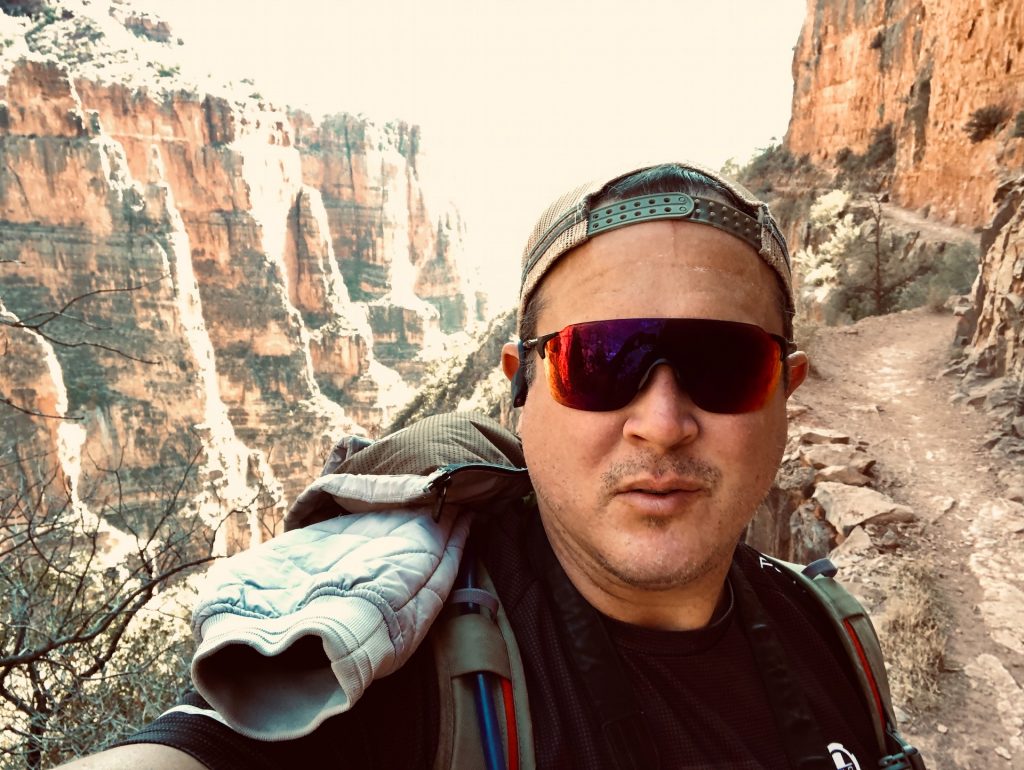





One of the most remarkable things about this trail is that it takes you through literally every ecosystem found from Canada to Mexico, including forests, desert, and riparian ecological zones. It’s also a marvel of trail engineering, with sections of the trail literally dynamited out of the side of the red canyon walls.

Forest gives way to desert on the North Kaibab trail.
The stricken hikers I met here had no regrets (other than not being able to finish) about attempting the Rim to Rim trail. My conversations with them about their journey to the base and the introduction to the North Kaibab left me longing to do the full Rim to Rim trek. It’s funny how checking off things on your bucket list often leads to more bucket list items. So as much I’d like to think I’ve checked off the Grand Canyon by visiting both the North and South Rims, I know I really haven’t gotten to the heart of it. I’m already making plans to return.
